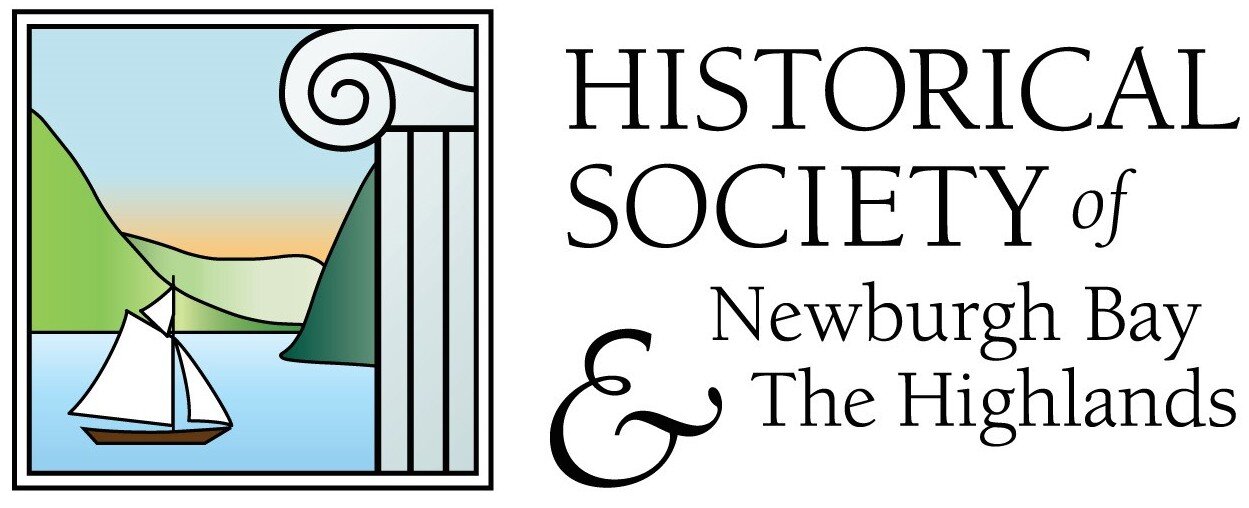Want to find out more about your Newburgh house or its occupants?
We receive a lot of questions about the histories of particular houses and buildings in and around Newburgh. People often ask about when their house was built and who built it, how it looked in a certain year, or who lived in their house. Admittedly, some of these questions are easier to answer than others, but it is always interesting to learn more about Newburgh’s built landscape.
Here at the Historical Society, we maintain many resources to help you learn more about your house. However, there are also plenty of resources you can access on your own to get started.
Ask your neighbors! An often-overlooked starting point, especially for newcomers. Your neighbors will certainly have stories about your house and its previous occupants; they may also have photos or other documents to allow you to begin your search.
Orange County Records: Original copies of deeds for all properties in Orange County are filed with the County Clerk at the Orange County Government Center in Goshen and go back to the earliest days of the county (established 1683). You can search the database yourself and request copies, or you can hire a title agency to search for you.
Newburgh City Building Department: Major events and changes in your building’s history (fires, renovations, and the like) will be recorded at the Newburgh City Building Department. Don’t expect to find building plans there though.
Newburgh City Directories: The precursor to city telephone directories, the Newburgh city directories date back to the early nineteenth century and are great resources to find out about the occupancy history of your home, especially if you have a few names and dates to go on already. Before 1918, the directories were arranged alphabetically by surname but provided no cross-index of addresses. However, from 1918 and after, you can search the city directory by street address as well as by surname. These directories also include occupations, marital status and all residents of legal age in the household. These are found in the Newburgh Free Library; we also have copies of most volumes. Some have also been scanned and are viewable online.
Sanborn Maps: For a sense of the historic layout of your neighborhood, refer to the Sanborn Fire Insurance Maps for Newburgh. These detailed maps of towns and cities were originally used by fire insurance companies in the nineteenth and twentieth centuries; they were produced annually and give a great sense of housing and development changes.
Want to find out more about your Newburgh ancestors?
With the popularity of genealogical websites and apps, many people are digging into their own family history to learn a bit about their ancestors and the kind of life they once led. If you had ancestors in the city and town of Newburgh or the town of New Windsor, there are number of resources you can consult.
Vital Records: Birth and death certificates (since 1881) for all of New York State can be procured through the NYS Department of Health Vital Records Unit. Birth and death certificates as well as marital records are also filed with the City Clerk, or Town Clerk (for the Town of Newburgh or New Windsor). Sometimes a place of burial is included in the record. There is usually a fee for procuring a copy.
US and NYS Census Records: The US government has held a census every ten years since 1790. Records up to and including the 1950 census are now online. New York State also held a census every ten years between 1825 and 1875, then one in 1892, 1905, 1915 and 1925 until the requirement was abolished. Unfortunately, a 1911 fire destroyed many of these state records; for the earlier census records, it is often better for researchers to go through county record offices, which also maintained copies. To purchase printed guides for particular counties, see the New York Genealogical and Biographical Society.
Cemetery Records: With over 900 cemeteries in Orange County, cemeteries are an integral source for genealogical research. Major cemeteries and crematories are listed with NYS Department of State. For many of the smaller cemeteries, local historical societies maintain records of inscriptions and burials; in addition, check the records at the Orange County Genealogical Society in Goshen.
Religious Institutions: Different religious organizations obviously have different archival practices (and archive locations) for information on baptisms, confirmations, marriages, ordinations and other religious rituals. Contact individual churches or synagogues for more information.
Newburgh City Directories: These are also a great resource for genealogical research. These directories, arranged by name, include occupations, marital status and all residents of legal age in the household. These are found in the Newburgh Free Library; we also have copies of most volumes. Some have also been scanned and are viewable online.
Newburgh Newspapers: Newburgh was once home to many different daily and weekly newspapers and their obituaries are valuable resources. Many of these newspapers have now been digitized; although the newspapers themselves may be long defunct, their current copyright holders often charge fees. See the Newburgh Free Library listing for what is available.
Orange County Genealogical Society: Completely volunteer-run, this is the richest local resource for genealogists and a vital stop for anyone working on family history in Orange County. Check the OCGS website to call (they don’t have email) and make an appointment.
